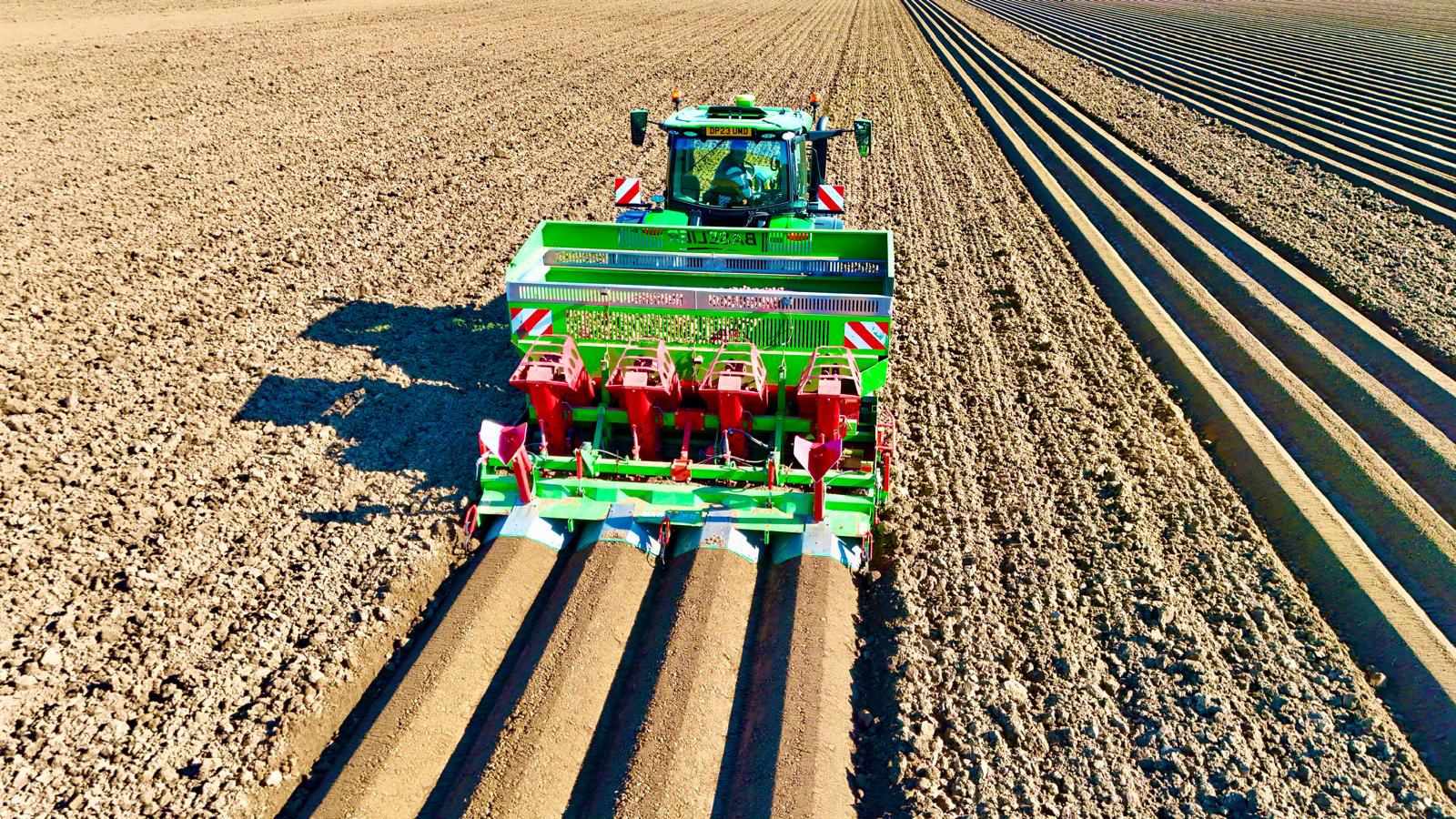Farming
At Luffness Mains Farming, we farm around 500 hectares in East Lothian and neighbouring counties with a dedicated team of seven, growing mainly potatoes, carrots and cereals.
We are committed to farming for improved sustainability, having signed up to the LEAF Marque in 2006, and the way we farm is guided by the LEAF principles of Integrated Farm Management.
We invest time in our team, educating our staff and concentrating on LEAF, to grow crops in a profitable and more sustainable way.
We produce between 6,000 and 8,000 tonnes annually of potatoes, about 3,000 to 4,000 tonnes of carrots and 1,500 tonnes of wheat (spring and winter) and oats. We also offer our land to local vegetable growers at some points in the crop rotation for growing cabbages, sprouts and broccoli.
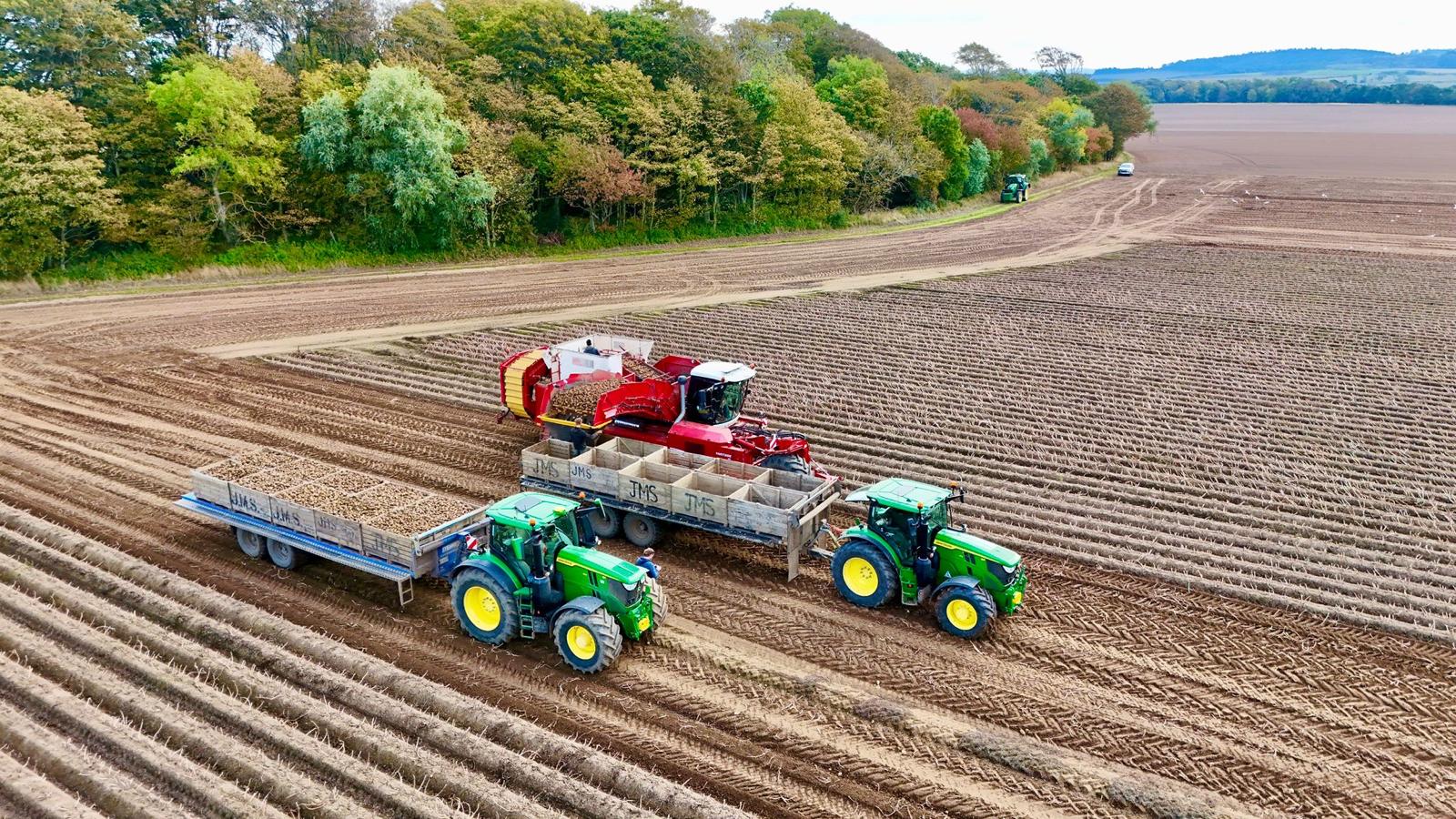

Traditional methods
Traditional crop rotation is still one of our main tools, helping us to maintain soil health, achieve natural control of pests and diseases, and optimise marketable yield.
A typical rotation on a suitable soil, sandy loam, would be:
wheat / brassicas (cabbages, sprouts or broccoli) / wheat or oats / carrots / wheat / potatoes (and back to the start)
In addition, we often grow cover crops such as radishes and clover after wheat is harvested, in late August and September. Our cover crops add organic matter to the soil and improve soil structure through the action of their roots.
Soils are tested every four years for their main and minor nutrients, as well as organic matter, so we can adjust any shortfall by applying both conventional and organic manures.
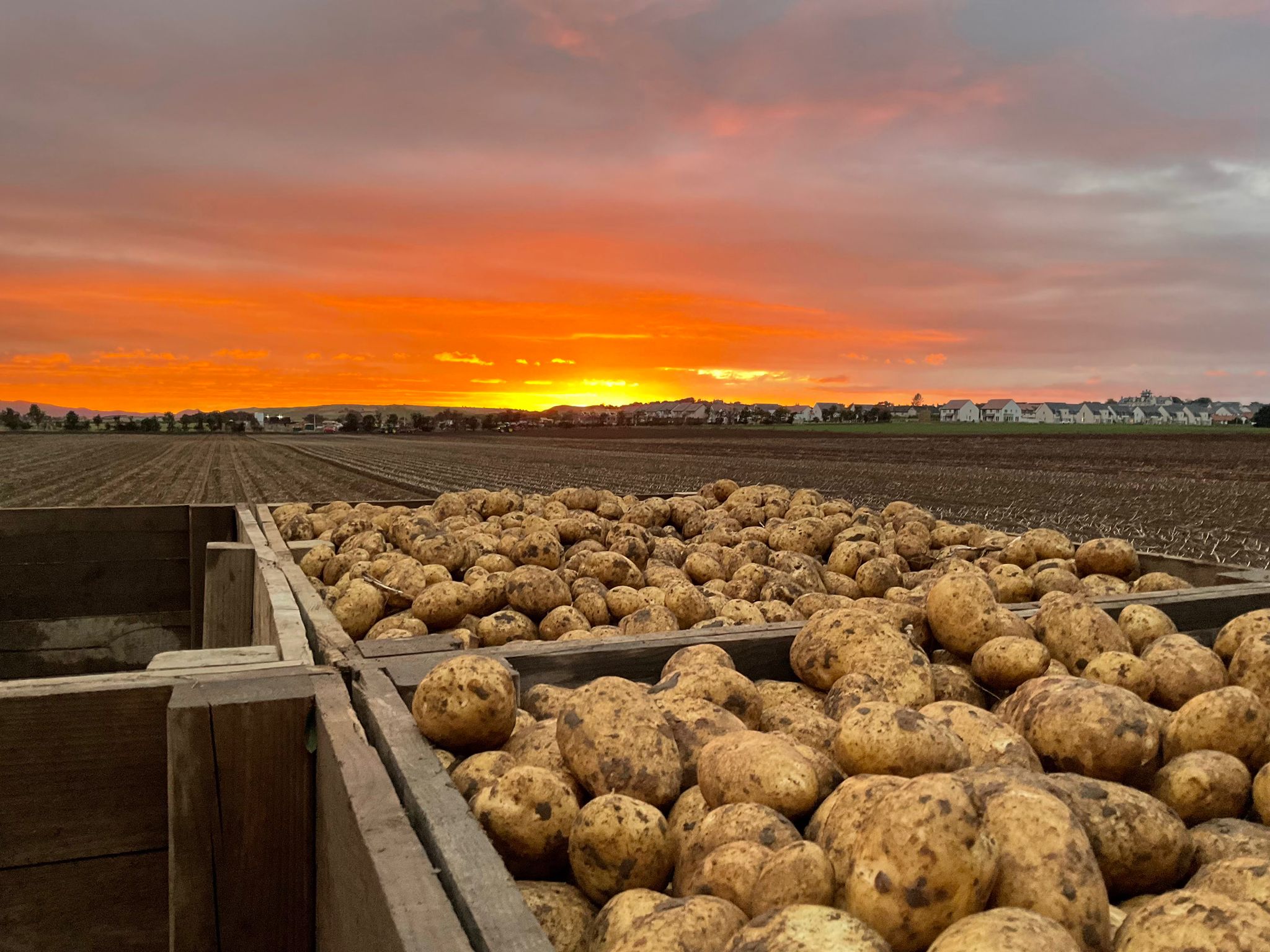

Technological innovation
We undertake regular carbon audits that measure yield against fertiliser and fuel, our biggest carbon use, as well as other inputs. Improved equipment and methods are key to reducing both our carbon use and our costs. We use up-to-date tractors and more efficient trucks for haulage. Our cold stores use ‘intelligent’ timers that minimise electricity use.
We are always looking for opportunities to trial new equipment that can save carbon, such as new machinery for planting potatoes, introduced in 2024.
Our fields are mapped in zones according to their soil texture (percentages of sand, silt and clay). Our tractors are guided by GPS, so each zone can be treated according to what it needs in the way of sprays or fertiliser, while avoiding overlaps.
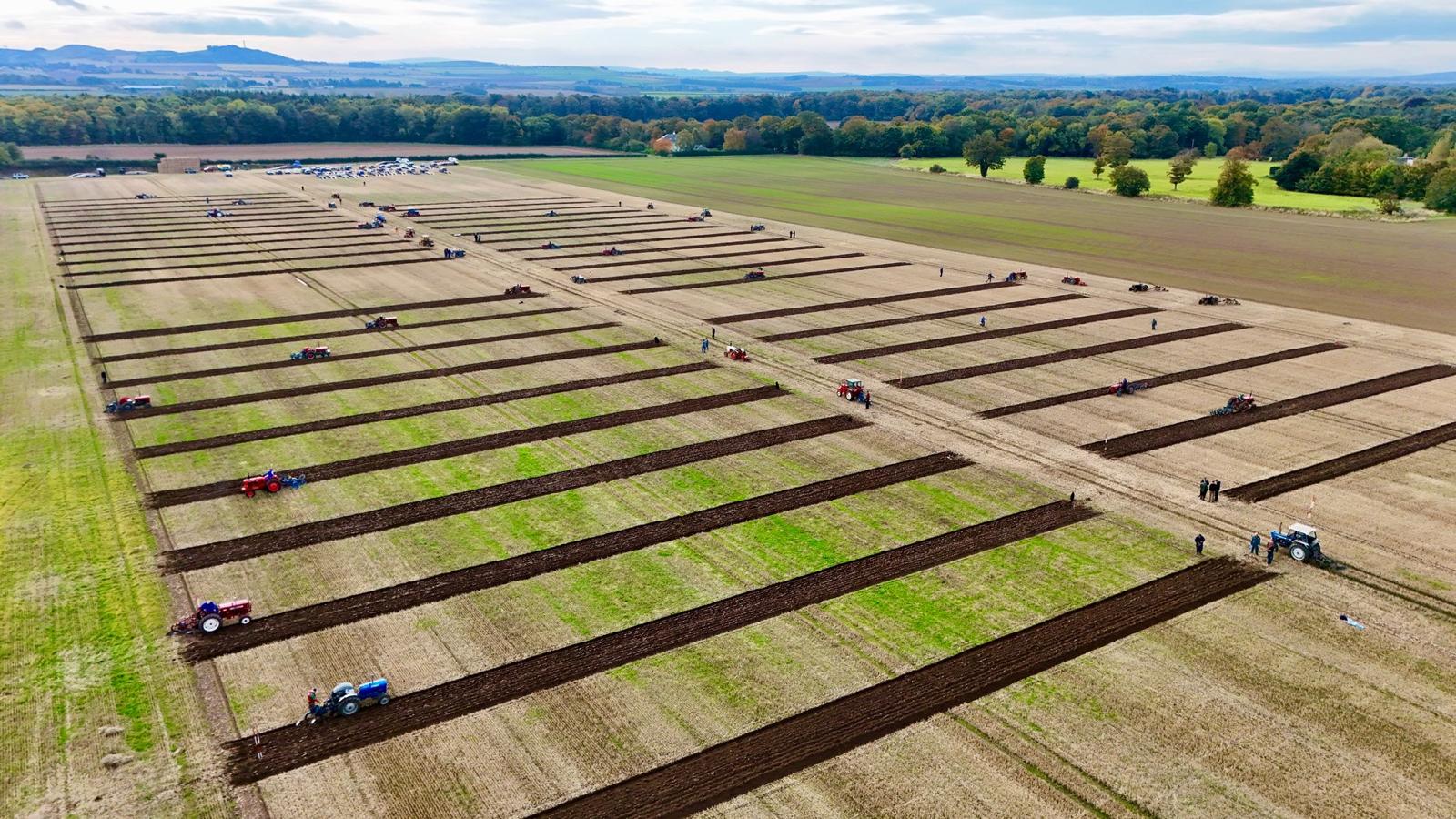

Field trials
Our commitment to innovation includes trials of new varieties, especially of potatoes, and of treatments such as sprays.
Luffness Mains Farming believes in justifying every input to our crops and we always try to minimise applications. We therefore constantly seek out and try natural and cultural ways of reducing or avoiding diseases and pests. Variety selection is a great example.
Crop health and traceability
We make weekly visits to every field to assess, observe and measure our crops and we record applications such as sprays or fertiliser. All this is logged through an online system called TELUS (previously Green Light Grower Management) through which every team member can access the history of every crop and see photos. Suppliers have access to the same information, providing full traceability on the food we grow.
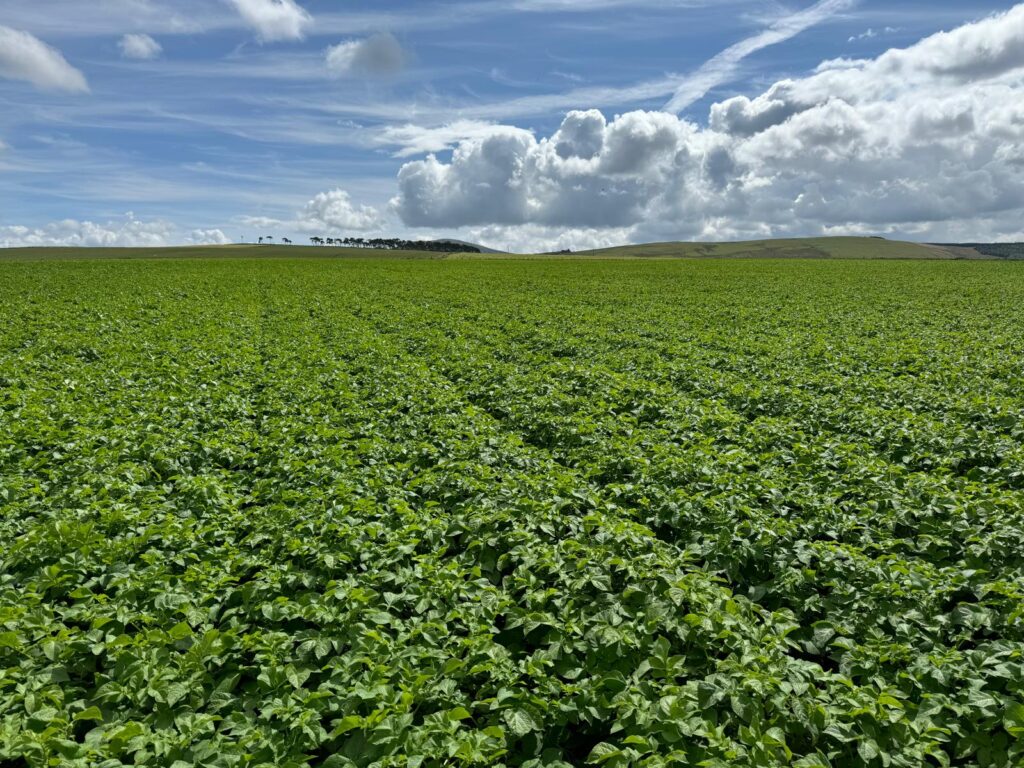

Partnerships
We have key relationships with a number of partners for advice and expertise including Agrii, who provide advice on agronomy at our locations on an almost daily basis, and Scottish Agronomy. Supplier relationships include Frontier for grain, Mercian for potatoes and Hammond for carrots.
We grow our own seed where we can and therefore have strong two-way relationships with seed houses such as Dods for seed grain, and Cygnet, Solana and Agrico for potato varieties.
Storage
We sell our potato crops almost all year round, so we require cold storage to keep them in top condition. We built new sheds in 2010, designed for year-round storage of grain and potatoes in climate-controlled conditions. The energy used is covered by our two wind turbines.
